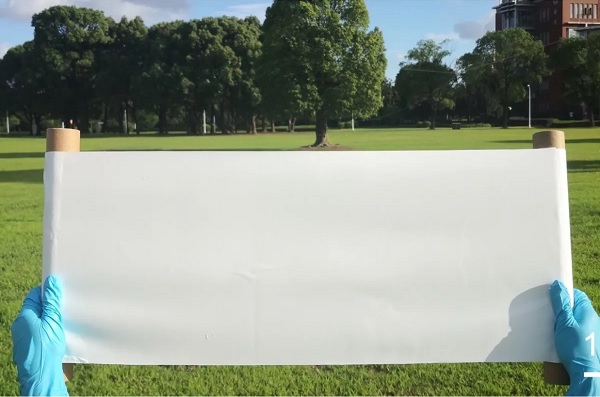Heating and cooling require a lot of energy, so scientists have been working hard to find new ways to passively help buildings or electronic equipment dissipate heat. The good news is that a research team from the University of Texas at Austin, Shanghai Jiaotong University, and KTH Royal Institute of Technology has developed a new scheme based on photomasks. Interestingly, its structure was inspired by the long-horned beetle (Neocerambyx Gigas) common in Thailand and Indonesia.

A roll of passive bionic heat dissipation materials (from: University of Texas at Austin)
This is very active around the volcano, even though the summer temperature can usually soar above 40°C (104°F), the ground temperature can reach 70°C (158°F).
The researchers became very interested in the heat resistance of these beetles, so they conducted in-depth research on their shell-like structure, and then imitated a new passive cooling film.
It is reported that the long-horned beetle has a tiny triangular structure on its wings, which can not only reflect sunlight, but also help it radiate heat from the body.
The imitation work started with a polymer called polydimethylsiloxane (PDMS), then incorporated ceramic particles into it, and microimprinted the film with a triangular pattern similar to the beetle's wings.
Tests show that the new mask has excellent passive heat dissipation performance. The temperature of the items under the bionic material can be 5.1°C (9.2°F) lower than that under direct sunlight.
The researchers claim that the new film can be used for surface coating of windows, photovoltaic panels, automobiles, fabrics, wearable devices, and other electronic devices to achieve energy saving and keep cool.
Research author Yuebing Zheng said that the new materials can play a role in almost any area that requires heat dissipation, such as refrigerators, air conditioners, and other devices that require large amounts of energy to cool themselves.
As the materials and processes used to make the mask have become quite popular, the prospect of commercial mass production for this study is also very clear. At present, the research team is continuing to work hard to optimize the relevant processes, with a view to gaining greater precision.
Details of this research have been published in the recently published "Public Proceedings of the National Academy of Sciences" (PNAS).
KOYO Needle Roller Bearings,KOYO roller bearing,KOYO thrust ball bearings,KOYO deep groove ball bearings,KOYO self-aligning ball bearing
Shanghai Yi Kai Cheng bearing Co., LTD , https://www.ykcbearing.com